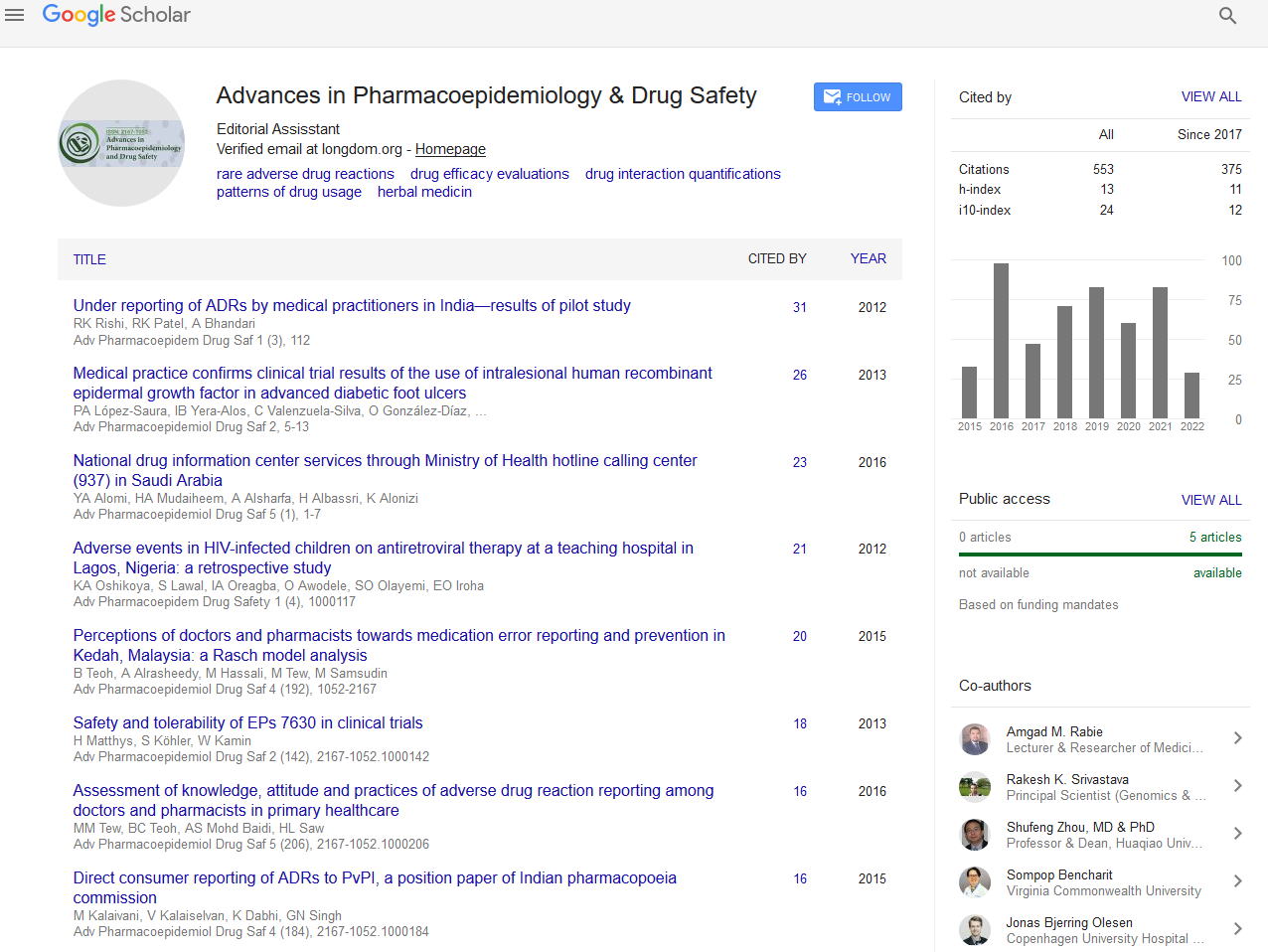Indexed In
- Open J Gate
- Genamics JournalSeek
- Academic Keys
- JournalTOCs
- RefSeek
- Hamdard University
- EBSCO A-Z
- SWB online catalog
- Publons
- Geneva Foundation for Medical Education and Research
- Euro Pub
- Google Scholar
Useful Links
Share This Page
Journal Flyer

Open Access Journals
- Agri and Aquaculture
- Biochemistry
- Bioinformatics & Systems Biology
- Business & Management
- Chemistry
- Clinical Sciences
- Engineering
- Food & Nutrition
- General Science
- Genetics & Molecular Biology
- Immunology & Microbiology
- Medical Sciences
- Neuroscience & Psychology
- Nursing & Health Care
- Pharmaceutical Sciences
Abstract
Pharmaco-Surveillance at Retail Outlets In Southern India
Ale Kiranmayee and B Dinesh Kumar*
Introduction: Pharmaco-surveillance is one of the important tools to monitor the post marketing trends of modern medicament. The current study is an attempt to survey and document the drug use profile in an urban and a rural area of southern India.
Methodology: The study sites were selected based on socioeconomic status from a metro city and a rural area (180 kms away) using cluster sampling method. The data has been collected, compiled and analyzed from 50% of pharmacy outlets in rural area and 10% of outlets in the selected urban areas.
Results: A total of 1023 pretested schedules (Urban- 717, rural- 306) were recorded. The self-medication rate in urban area (25%) was more compared to rural area (8%). Analgesics (22-23%), antibiotics (20-22%), nutritional supplements (10-16%) and antacids (11-14%) were the main category of medicines purchased. The prescriptions for metabolic disorders were more in urban area (8%). The antibiotics like Cephalosporins were preferred in urban area to synthetic penicillins in rural area. The irrational use of antibiotics was observed in around 30-40% of prescriptions. The fixed dose combinations (FDC) constitute 35% of total drugs. The mean prescription cost in urban area and rural area was INR 111.4 ± 120.67 and INR 77.7 ± 59.13 respectively.
Conclusion: Irrational use of antibiotics remains the major concern due to prevalence of resistance. High use of FDCs warrant their requirement and suggest monitoring through regular pharmacosurveillance studies. This study also emphasizes the need of strict regulatory practices to implement rational use of drugs.
Published Date: 2020-11-23; Received Date: 2020-08-17


